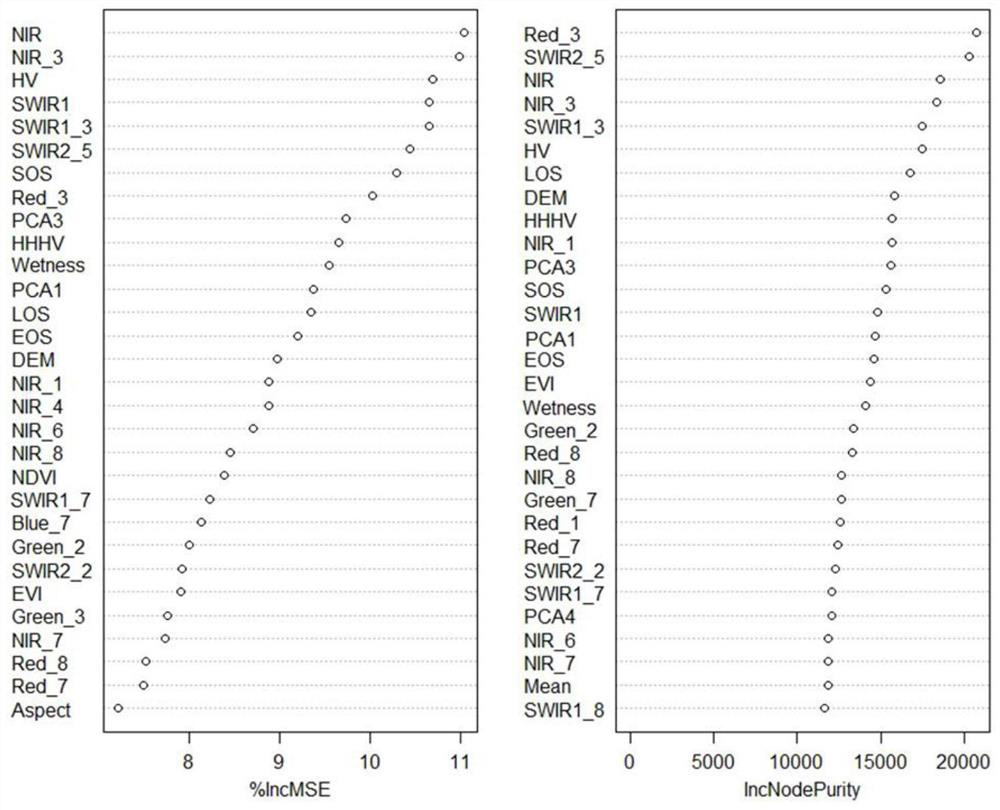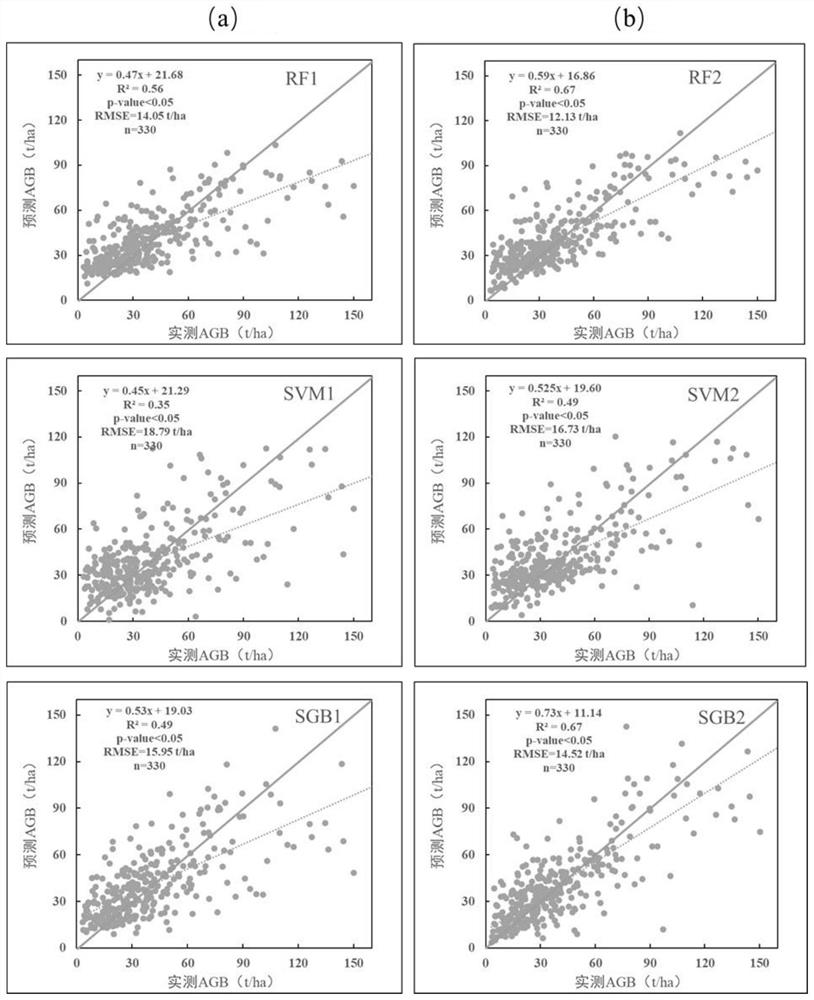Forest biomass estimation method considering harmonic model coefficient and phenological parameter
A technology of forest biomass and model coefficients, applied in the field of forest biomass mapping, can solve the problems of difficult large-scale promotion, large investment of manpower and material resources, poor timeliness of inventory results, etc., and achieve the effect of improving estimation accuracy and accuracy
- Summary
- Abstract
- Description
- Claims
- Application Information
AI Technical Summary
Problems solved by technology
Method used
Image
Examples
Embodiment
[0045] Embodiment: A forest biomass estimation method considering harmonic model coefficients and phenological parameters, comprising the following steps:
[0046] S1. Image acquisition and preprocessing;
[0047] S11. Obtain Landsat images of multiple sensors within a period of time in the area to be classified. The data in this embodiment are downloaded from the official website of the United States Geological Survey (USGS) for free. From January 1, 1999 to December 31, 2019, the cloudiness is less than 80% of Landsat TM / ETM+ / OLI Landsat images, the downloaded data track number is 131 / 042, a total of 610 images. There are 152 TM images, 243 ETM+ images, and 119 OLI images. Due to the weather, there are relatively few images with cloud cover less than 80% in summer in July. Sentinel-2 data is also downloaded from the European Space Agency, including all March-November 2017-2019 Sentinel-2 Top of Atmosphere (TOA) radiation data with cloud cover below 80%, orbit number For T4...
PUM
 Login to View More
Login to View More Abstract
Description
Claims
Application Information
 Login to View More
Login to View More - R&D
- Intellectual Property
- Life Sciences
- Materials
- Tech Scout
- Unparalleled Data Quality
- Higher Quality Content
- 60% Fewer Hallucinations
Browse by: Latest US Patents, China's latest patents, Technical Efficacy Thesaurus, Application Domain, Technology Topic, Popular Technical Reports.
© 2025 PatSnap. All rights reserved.Legal|Privacy policy|Modern Slavery Act Transparency Statement|Sitemap|About US| Contact US: help@patsnap.com



